Iranian Caspian Sea | The Enchanting Sea
The Caspian Sea, the world's largest enclosed body of water, holds cultural and natural significance at the convergence of Europe and Asia.
Within its expanse, the Iranian Caspian Sea region stands out as a destination of unique charm. This guide provides a concise overview of the region's key attractions, emphasizing its cultural heritage, scenic beauty, and relevance for tourists.
Caspian Sea Geographical Overview
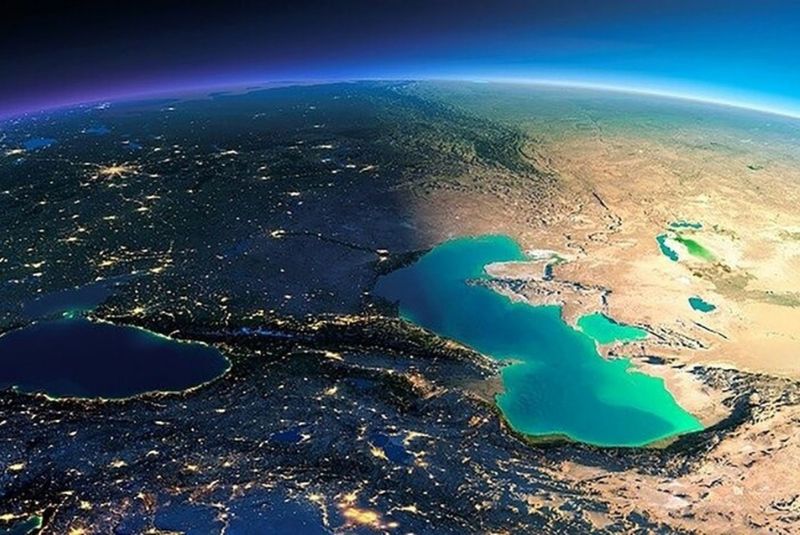
The Caspian Sea is an expansive inland body of water that spans approximately 143,000 square miles. It is characterized by diverse landscapes, ranging from coastal plains to mountainous regions, creating a picturesque backdrop for those who venture to its shores.
The Caspian Sea map shares its borders with five countries, each contributing to the unique cultural and historical tapestry of the region. These nations include Iran, Russia, Kazakhstan, Turkmenistan, and Azerbaijan, collectively shaping the geopolitical dynamics and trade routes around the sea.
Along the Iranian coastline of the Caspian Sea, several notable cities offer a blend of tradition and modernity; Cities such as Bandar-e Anzali, Rasht, and Chalus. These coastal hubs provide access to pristine beaches and serve as starting points for exploration into the enchanting Iranian Caspian Sea region.
| Related: Iran’s Top 10 Seas and Lakes to Explore
Is the Caspian Sea a Lake or a Sea?
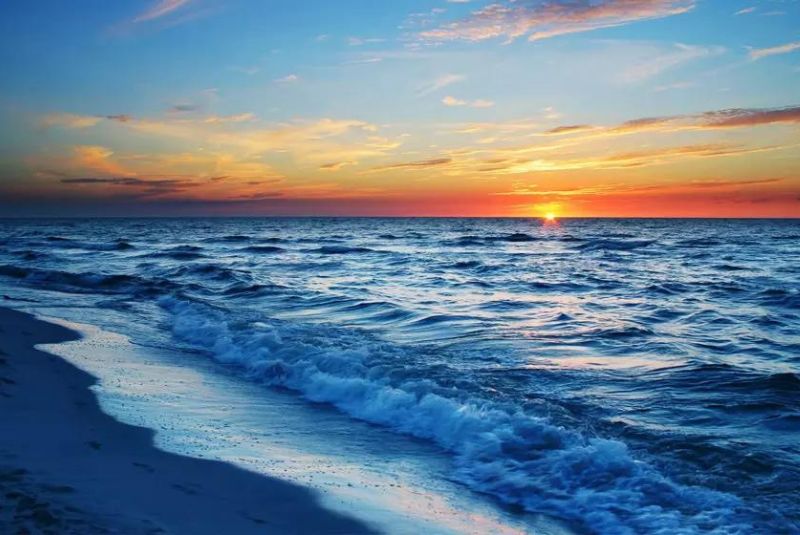
The categorization of the Caspian Sea as either a lake or a sea has been a subject of geographical and scientific discussion. Officially recognized as the largest enclosed body of water on Earth, it holds the status of a sea due to its vast size and unique geological and oceanographic characteristics. However, the Caspian Sea is, in essence, a lake, as it lacks a natural outflow and is surrounded by land, making it distinct from traditional seas connected to the world's oceans.
| Suggestion: Top 10 Forests and Jungles of Iran
Unique Features and Characteristics of Caspian Sea
The Caspian Sea stands out for its diverse and distinct features that contribute to its allure. Varying salinity levels create unique ecological niches, fostering the existence of specific fish species found nowhere else on the planet. The sea's northern regions exhibit lower salinity, while the southern parts are characterized by higher salt concentrations. This diversity in salinity fosters a rich marine life, making the Caspian a unique and biologically significant ecosystem.
The surrounding landscapes add to the Caspian's charm, ranging from golden sandy beaches to lush coastal areas framed by the Caspian Hyrcanian mixed forests. These forests, recognized as a UNESCO World Heritage site, enhance the scenic beauty of the region and contribute to its ecological diversity.
| Discover: Persian Gulf Islands - A Traveler's Guide to Iran's Coastal
Iran Caspian Sea Environmental Significance
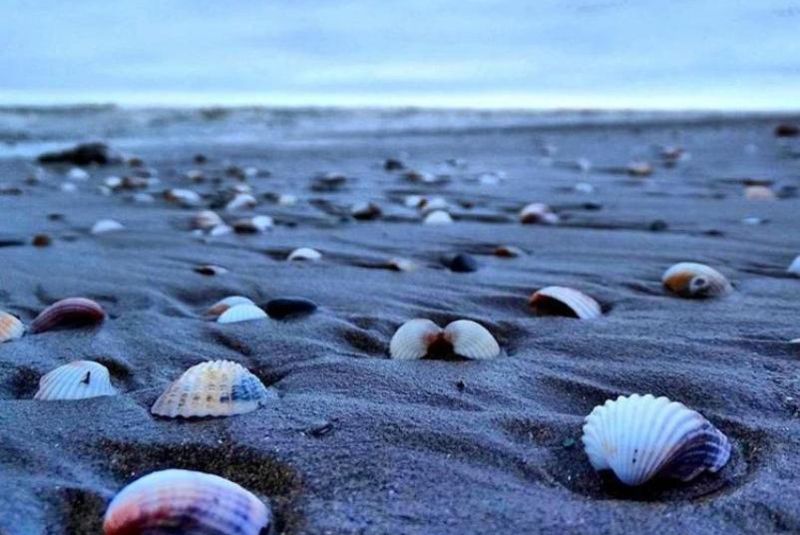
The Caspian Sea holds paramount environmental importance, serving as a habitat for numerous migratory bird species along its shores. The wetlands and coastal areas play a critical role in supporting these birds during their annual journeys. Additionally, the sea's fisheries contribute significantly to the economies of the countries bordering it, making sustainable management crucial for the preservation of both the environment and local livelihoods.
| Discover: Persian Gulf or Arabian Gulf? What's the Truth?
Diverse Marine Life in the Caspian Sea

The Caspian Sea, teeming with a rich array of marine life, stands as a biological treasure trove within its unique ecosystem. Its status as the largest enclosed body of water on Earth has fostered a diverse range of species, making the sea a vital hub for biodiversity. The combination of varying salinity levels and distinct ecological niches has created a habitat that supports an abundance of marine organisms, contributing to the ecological richness of the Caspian region.
Among the notable inhabitants of the Caspian Sea are its unique fish species, many of which are endemic to this vast body of water. Sturgeon, with its various species such as beluga, Russian, and Persian sturgeon, holds particular significance. Known for their prized roe, these sturgeon have been a cornerstone of the region's cultural and economic heritage, as the Caspian Sea has been historically renowned for producing some of the world's finest caviar. Other important Caspian fish species include carp, pike, and Caspian salmon, each contributing to the ecological balance and the region's fishing industry.
Fishing has long been a crucial aspect of life around the Caspian Sea, supporting the livelihoods of local communities and contributing to the economies of the countries that border it. The traditional practice of caviar harvesting, especially from sturgeon, has been a cultural and economic cornerstone for generations. However, sustainable fishing practices are increasingly recognized as essential to maintaining the delicate ecological balance of the Caspian Sea. Efforts are underway to manage and conserve fish stocks, ensuring that this invaluable resource continues to thrive for both ecological integrity and the well-being of the communities that depend on it.
| Related: Why Explore Iran's Ecotourism Wonders
Caspian Sea Beaches in Iran
The coastline along Iran Caspian Sea features a mesmerizing blend of sandy shores, picturesque landscapes, and vibrant coastal communities. Stretching for over 900 kilometers, the Caspian coastline in Iran is a haven for beach enthusiasts seeking a perfect combination of relaxation and exploration.
Namakabroud Beach
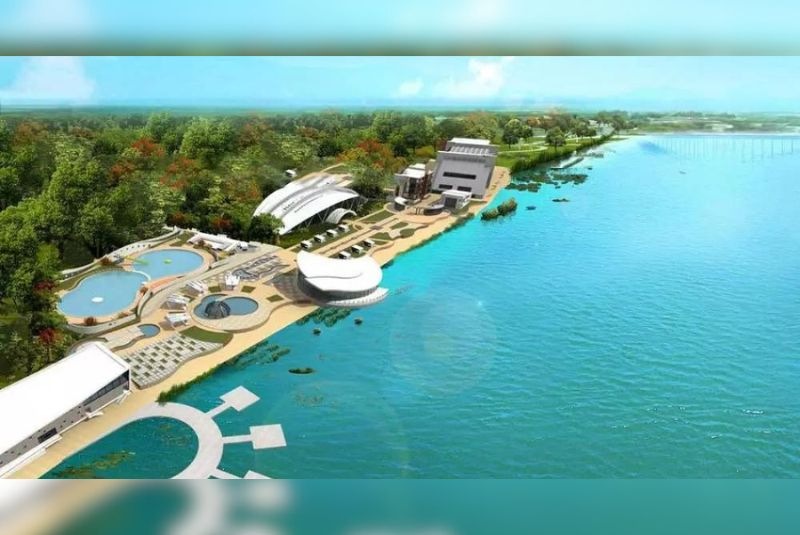
Nestled near Chalus, Namakabroud Beach enchants visitors with its golden sands and clear waters. The beach is known for its tranquility and is a popular spot for those seeking a peaceful retreat.
Activities and Amenities:
- Water sports, including jet skiing and parasailing
- Cozy beachfront cafes offering local delicacies
- Relaxing seaside accommodations
Ramsar Beach

Located in the city of Ramsar, this beach offers a vibrant atmosphere with a bustling promenade and lively entertainment options. The beach is a favorite among locals and tourists alike.
Activities and Amenities:
- Beachside markets and cultural events
- Boating and paddleboarding
- Restaurants serving fresh seafood
Javaherdeh Beach:
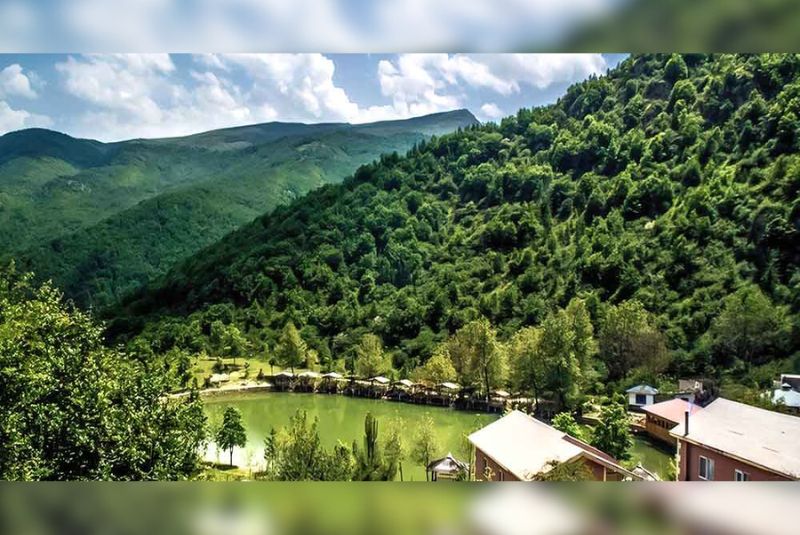
Positioned near the city of Babolsar, Javaherdeh Beach captivates visitors with its pristine beauty and calm waters. The beach provides a serene escape, perfect for a day of relaxation.
Activities and Amenities:
- Nature walks along coastal trails
- Beachside picnics with scenic views
- Charming guesthouses for overnight stays
| Also read about: Top Iran Ski Resorts
Iran Caspian Sea Resorts
The Iranian Caspian Sea region is adorned with a collection of resorts that seamlessly blend luxury, natural beauty, and cultural richness. These resorts offer travelers an exquisite retreat, allowing them to indulge in the serene ambiance and diverse experiences along the Caspian coastline.
Pamchal Resort, Chalus
Pamchal Resort, situated in the charming town of Chalus, stands as a symbol of elegance and comfort. Nestled amid lush greenery, the resort provides breathtaking views of the Caspian Sea.
Accommodations, Facilities, and Services:
- Luxurious rooms and suites with sea-facing balconies
- Outdoor swimming pools and spa facilities
- Fine dining restaurants offering a blend of local and international cuisine
Anzali Lagoon Resort, Bandar-e Anzali
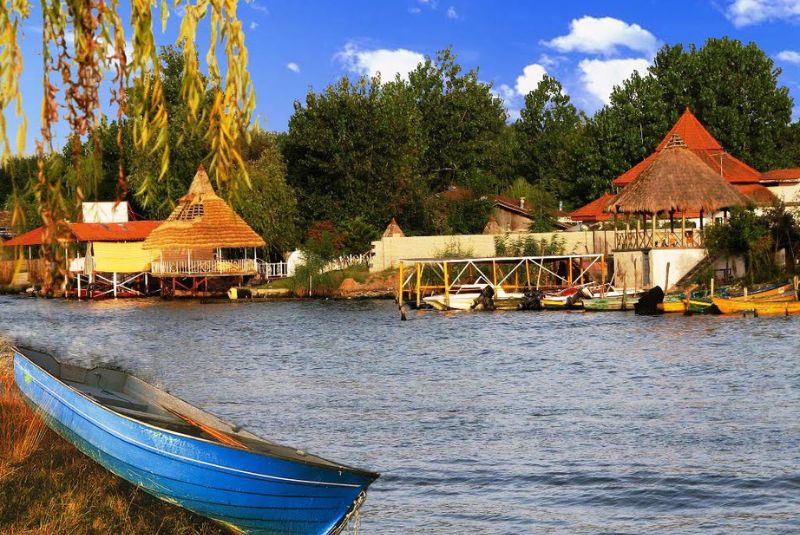
Anzali Lagoon Resort, located near the historic city of Bandar-e Anzali, offers a unique blend of comfort and ecological harmony. The resort is situated on the shores of the Anzali Lagoon, creating a tranquil retreat.
Accommodations, Facilities, and Services:
- Eco-friendly accommodations with lagoon views
- Boat tours and bird watching excursions
- Organic dining options showcasing local flavors
Unique Experiences and Activities
The resorts along the Caspian Sea in Iran provide more than just luxurious accommodations; they offer a myriad of unique experiences for guests to immerse themselves in the local culture and natural wonders.
- Cultural Workshops: Iran Caspian Sea resorts often host workshops, allowing guests to participate in traditional crafts, cooking classes, and cultural activities, providing an authentic glimpse into the region's heritage.
- Nature Excursions:Guided nature walks, bird watching tours, and visits to nearby natural reserves offer guests the opportunity to explore the diverse ecosystems surrounding the resorts.
- Waterfront Events:Resorts frequently organize beachside events, including music festivals, cultural performances, and themed parties, enhancing the overall experience for visitors seeking both relaxation and entertainment.
Iranian Caspian Sea Cultural and Historical Significance
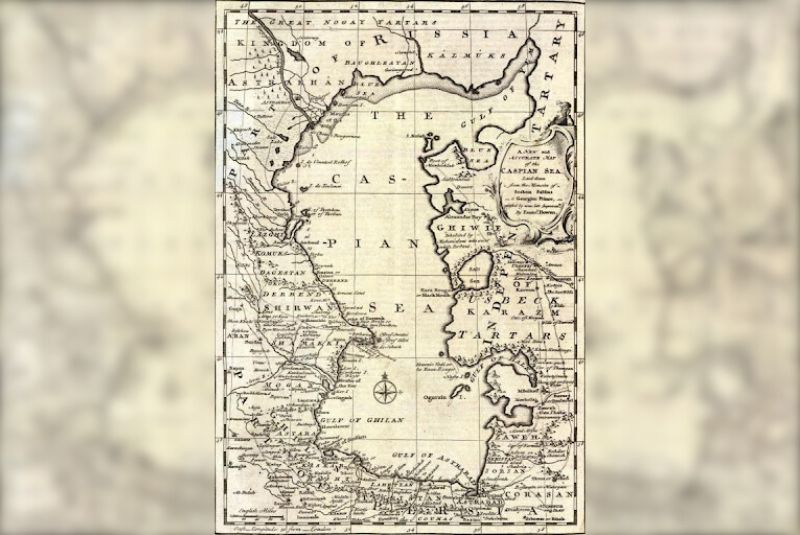
The Iranian Caspian Sea region is a world of historical landmarks that reflect the region's rich cultural heritage. From ancient structures and natural landmarks to more recent architectural marvels, these landmarks are the must-visit attractions of Iran.
- Ramsar Palace: Built during the Pahlavi era, Ramsar Palace stands as an architectural marvel along the Caspian coastline. Nestled amidst lush gardens, this historic palace served as a retreat for the royal family and witnessed key moments in Iranian history.
- Sheikh Zahed Gilani Mausoleum, Lahijan: The mausoleum of Sheikh Zahed Gilani, a revered Sufi mystic, is a center of spiritual significance. The intricate architecture and serene surroundings make it a place of contemplation and historical reverence.
- Caspian Hyrcanian Mixed Forests: A UNESCO World Heritage site, not only contribute to the ecological diversity but also hold cultural significance. The lush forests have inspired local folklore, traditional crafts, and artistic expressions.
Iran Caspian Sea Local Traditions and Events
The Iranian Caspian Sea region is steeped in traditions and hosts a variety of events that showcase the local way of life, fostering a sense of community and cultural pride.
- Nowruz Celebrations: Nowruz, the Persian New Year, is celebrated with fervor along the Caspian Sea in Iran. Local communities engage in traditional festivities, including the Haft-Seen table, family gatherings, and vibrant street events.
- Fishing Festivals: Fishing holds a special place in the hearts of Caspian Sea communities. Fishing festivals are celebrated with enthusiasm, featuring competitions, cultural performances, and feasts centered around the sea's bounty.
- Local Handicraft Fairs: Artisanal traditions are celebrated through local handicraft fairs, where traditional artworks, carpets, and handmade goods are showcased. These events provide visitors with an opportunity to witness and purchase authentic local crafts.
Iran Caspian Sea Activities for Tourists
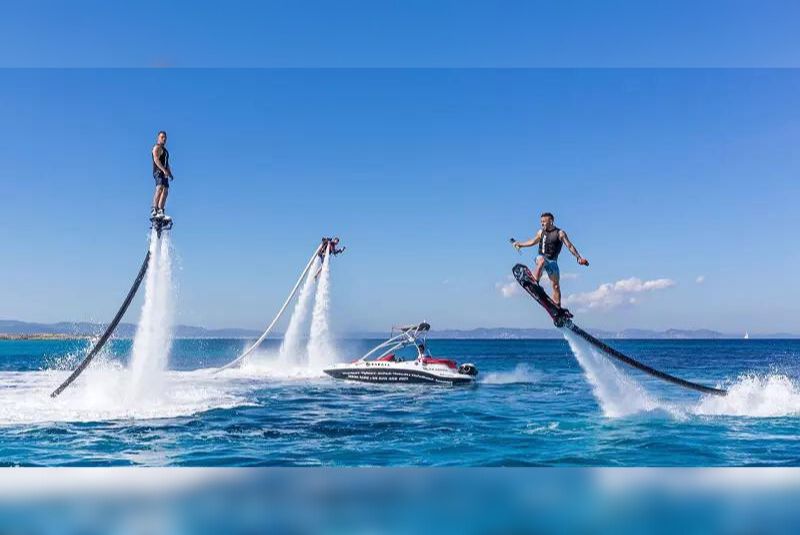
Water Sports (e.g., Sailing, Kayaking)
The Caspian Sea's expansive waters offer a playground for water sports enthusiasts. Resorts along the coastline provide opportunities for sailing and kayaking, allowing visitors to explore the sea's beauty from a unique perspective. Whether it's catching the wind in a sailboat or paddling along the tranquil shoreline, these activities promise an exhilarating experience for adventurers.
Fishing Excursions
For those drawn to the sea's bounty, fishing excursions in the Caspian Sea are a popular and rewarding pursuit. Tourists can join guided fishing trips to catch a variety of fish species, immersing themselves in the rich maritime culture of the region. The thrill of a successful catch and the tranquil ambiance of the sea make fishing excursions a memorable activity.
Hiking and Nature Walks
The Caspian Sea region is blessed with diverse landscapes, making it an ideal destination for hiking and nature walks. Trails along the coast and through lush forests provide opportunities for both casual strolls and more challenging hikes. Exploring the region on foot unveils breathtaking scenery, diverse flora and fauna, and a chance to connect with the natural beauty of the Iran Caspian Sea.
Exploring Nearby Attractions
Beyond the shores, tourists can explore the rich cultural and historical attractions that dot the Caspian Sea region. From ancient palaces and mausoleums to vibrant markets and traditional villages, there's a wealth of nearby attractions to discover. Guided tours and self-guided adventures allow tourists to dive into the region's heritage and witness the convergence of history and natural beauty.
Local Cuisine of Caspian Sea in Iran

The culinary scene along the Caspian Sea in Iran is a celebration of seafood, with a myriad of dishes showcasing the bounty of the sea.
- Caviar: Renowned worldwide, Caspian caviar is a delicacy that captivates the senses. Produced from sturgeon roe, the caviar from the Caspian Sea is celebrated for its unique flavor and texture, offering a taste of luxury.
- Smoked Fish: The Caspian Sea's diverse fish species contribute to a variety of smoked fish delicacies. From smoked sturgeon to smoked Caspian salmon, these dishes are prepared with traditional methods, infusing the seafood with distinctive flavors.
- Mirza Ghasemi: A delectable appetizer, Mirza Ghasemi is an eggplant and tomato-based dish infused with garlic and spices. Often enjoyed with bread, it showcases the flavors of locally grown vegetables.
- Baghali Polo with Fish: This aromatic dish combines dill, fava beans (baghali), and rice, creating a flavorful base for grilled or fried fish. Baghali Polo with Fish is a staple during celebrations and special occasions.
| Related: Top 17 Iranian Seafood Cuisine
Popular Restaurants and Cafes
The Caspian Sea region is dotted with charming establishments that offer a taste of both traditional and contemporary Iranian cuisine.
- Ferdowsi Restaurant, Rasht
- Javaher Dasht Café, Chalus
- Gilan Traditional Restaurant, Bandar-e Anzali
| Also read: Persian Food
When to Visit Caspian Sea in Iran?
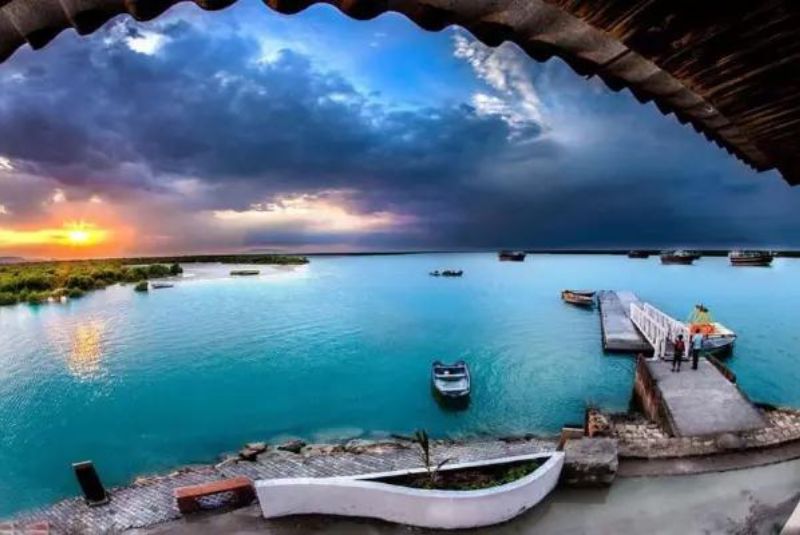
The best time to visit the Caspian Sea region in Iran is during the late spring, summer, and early fall months when the weather is generally mild and conducive to outdoor activities.
It's important to note that the Caspian Sea region experiences a high level of precipitation, especially in the winter months. While the landscape is lush and green due to this rainfall, travel during the winter might involve cooler temperatures and wet conditions.
Final Takeaway
As the sun sets over the Caspian Sea, casting hues of gold and pink across the horizon, one can't help but feel the enchantment that defines this captivating region. Whether seeking adventure, relaxation, or cultural immersion, the Iran Caspian Sea awaits with open arms, promising a journey filled with memories that linger long after the waves have receded.
Share your story!
Comment below and let us know about your Experience.
Your story inspires others!


Comment
Leave a Comment